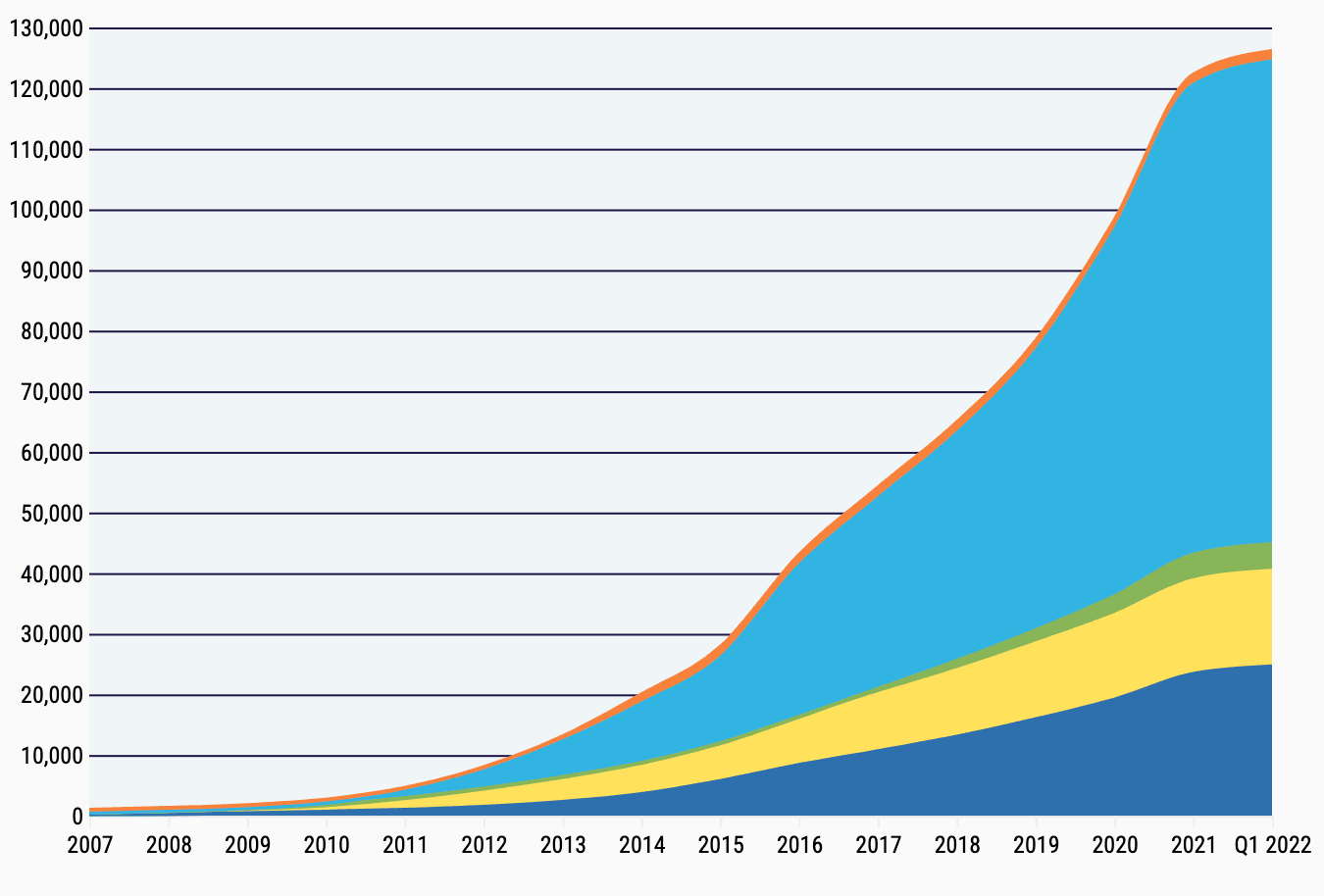The sun’s power is virtually infinite — opportunities to collect and make use of it are not. As demand for renewable energy increases, so does the need for places to generate it.
This need has set off a global scramble for real estate on which to build the green energy infrastructure the world desperately needs to avert a climate catastrophe. This is especially true for large solar arrays, which take up vast amounts of acreage. But over the last few years, a technological evolution has resulted in solar farms that take up no land at all.
The most recent major example went into operation in July: an undulating array of 12,000 solar panels 100 miles southwest of Lisbon bobbing atop the reservoir of Portugal’s Alqueva dam.
With a span of four soccer fields and a peak capacity of five megawatts, the Alqueva Floating Solar Power Plant, built by Portugal’s main public utility EDP, is the largest floating solar farm in Europe, generating enough electricity to meet the needs of more than 30 percent of the region’s population. It’s part of a rising tide of floating solar — or “floatovoltaic” — power plants that are proving the renewable revolution need not stop at land’s end.
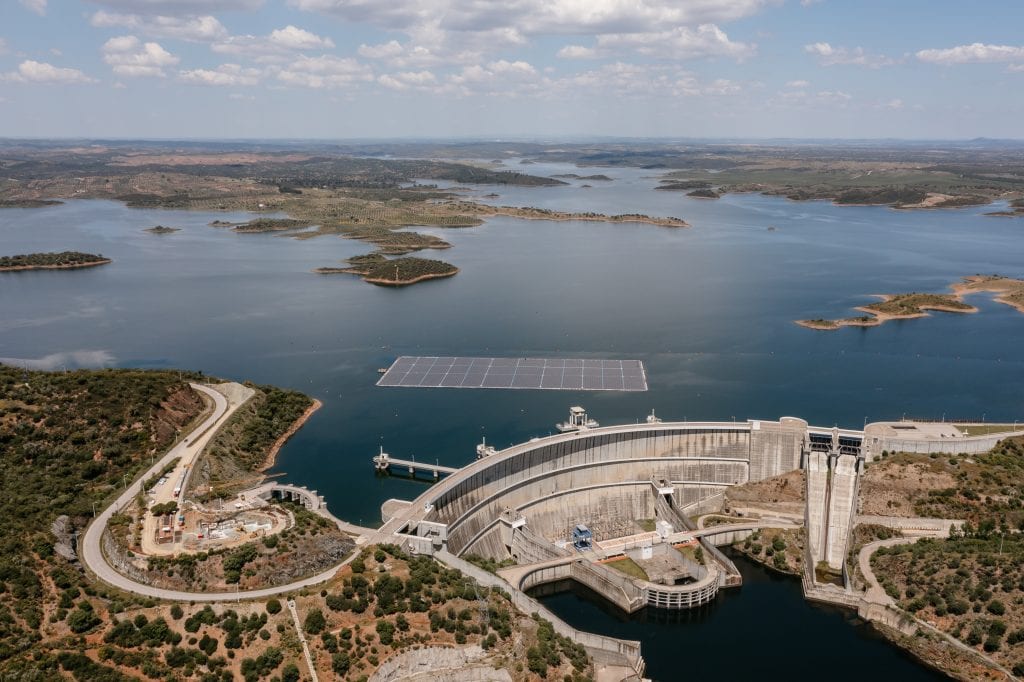
Over the past decade, the growth of floating solar has been astoundingly rapid, both at Alqueva and beyond. “Once the licensing process was concluded, the whole process of assembling the platform and the solar panels was quite fast,” according to a statement from EDP. “[Assembly] began in January this year and, at the beginning of May, the platform was moved from the river bank to its final location on the dam’s reservoir. In July, it began producing and injecting energy into the grid.”
The sheer size of the Aquelva project is remarkable given how young the technology is. The first commercial floating solar array was built in 2008 and mounted on an irrigation pond at the Fan Niente Winery in Oakville, California. A lot has changed since then, and the world of commercial floating solar has ballooned from a pontoon-mounted 175-kilowatt Napa Valley novelty to a burgeoning global industry.
In 2015, when EDP first forayed into floating solar with its 220-kilowatt Alto Rabagão reservoir pilot project in Northern Portugal, global floating solar generating capacity stood at roughly 68 megawatts. Today, total capacity is about 5,000 megawatts — a 73-fold increase. By 2027, according to an estimate by energy analytics firm Wood Mackenzie, that could more than quadruple to over 21 gigawatts worldwide.
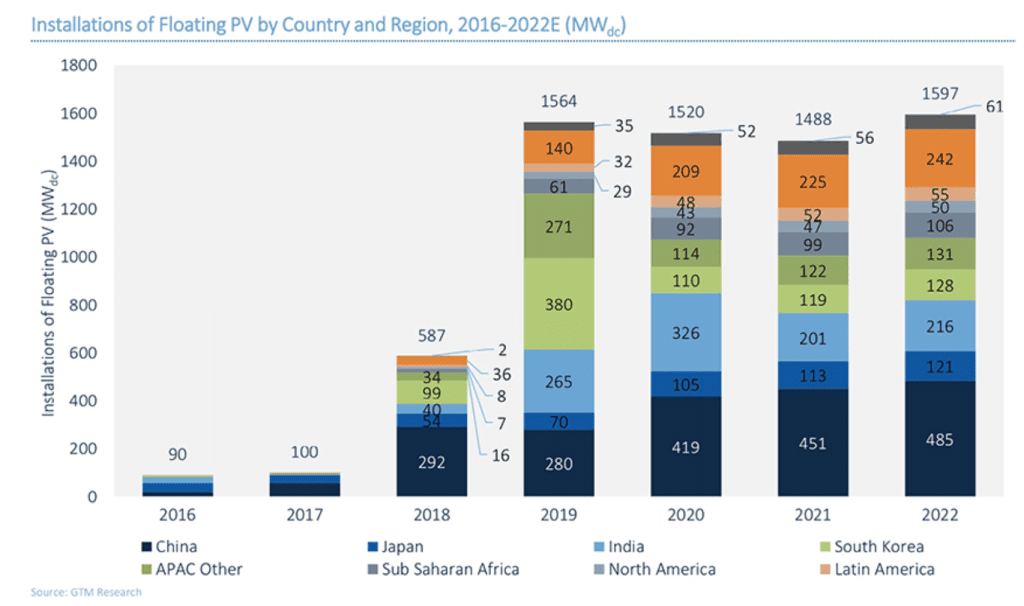
The driving force behind this meteoric rise stems from improvements in solar technology itself. Between 2009 and 2021, the cost of electricity from photovoltaic solar fell by over 90 percent. Over the same period, worldwide solar generating capacity has increased by a factor of 20, from 40 gigawatts to over 840 gigawatts, as panels have cropped up across rooftops, deserts, farmland and fields.
But those facts explain the rise of solar generation writ large, the vast majority of which occurs on solid ground. So, why bother making it float? The answer lies in the land.
Among major energy sources, solar has a high land-intensity, with ground-mounted photovoltaic systems requiring 200 square feet per megawatt hour of capacity, on average. Open land gets rarer and far more expensive closer to centers of demand, and transmitting power comes at the cost of money, efficiency, and — surprise — even more land. As demand for solar generation increases, competing interests for that acreage, from agriculture to development to preservation, are among the biggest challenges the industry faces in its efforts to expand.
“There is still so much untapped potential”
There are few tracts of real estate on Earth more valuable than Napa Valley soil, which helps explain why a California winery became the site of the world’s first floating solar farm. Floating panels at Far Niente meant more vines and more wine. The floating array saved the winery three-quarters of an acre of land, allowing it to produce $150,000 of additional Cabernet annually.
As floating arrays have gotten cheaper, they’ve proven useful — and cost-effective — even in real estate less rarified than Napa Valley.
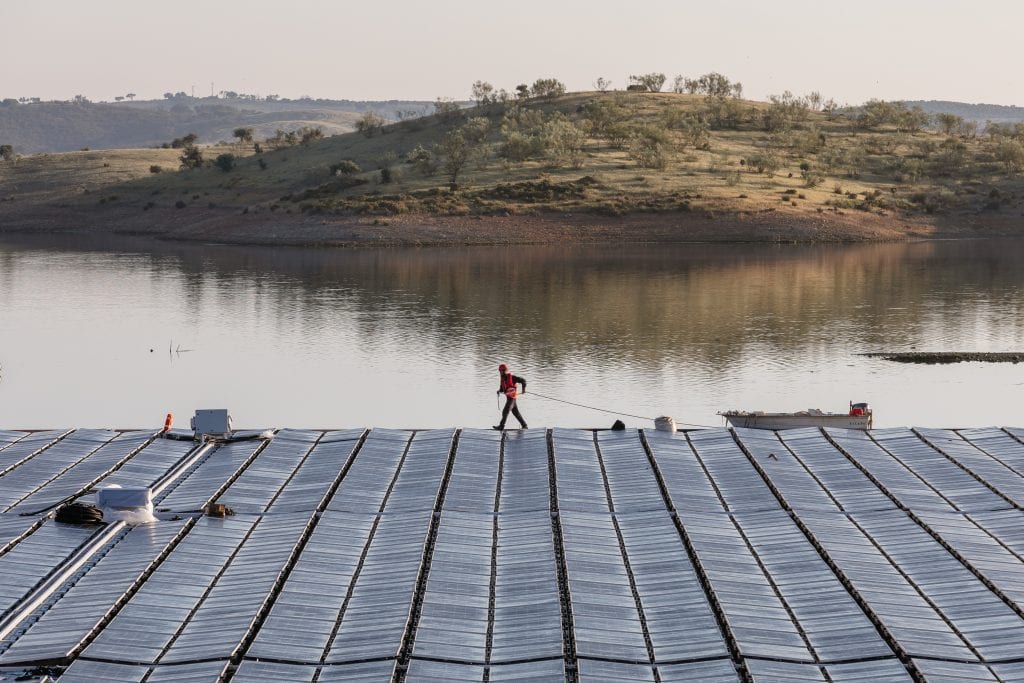
“If you know anything about Florida, and especially south Florida, you know that we have retention ponds and bodies of water just throughout our entire peninsula,” says Stetson Tchividjian, director of business development at D3 Solar. “Where land is either very expensive or very scarce, why not utilize a lot of these bodies of water?”
Founded in 2013, Florida-based D3 Solar was one of the first developers in the United States to specialize in floating solar. D3 has built floating rigs for the U.S. Army, Miami International Airport, and even a multicolored array for Universal Studios that bears the Comcast logo.
Though sunny and tropical Southern Florida is among the regions best suited for floating solar, opportunities for expansion don’t end there. “There is still so much untapped potential when we look at available water bodies globally,” says Molly Cox, project manager on the Solar Independent Engineering team at DNV, an Oslo-based risk-assessment firm. “With even more renewable energy incentives at the local levels, falling raw material costs and potential to pair floating PV with existing energy sources, I think floating PV has a promising future.”
Crushed by negative news?
Sign up for the Reasons to be Cheerful newsletter.In 2018, the National Renewable Energy Laboratory identified 24,419 man-made bodies of water in the U.S. alone as suitable for floating solar development. If those lakes, ponds and reservoirs — representing just 12 percent of total man-made water area — were utilized, their potential solar generation could reach 10 percent of the U.S. total.
Utilizing even small tracts of water can yield outsized benefits. EDP’s Alqueva array, for instance, takes up just 0.016 percent of the reservoir total surface area. The relative footprint is even smaller when taking into account the reduced need for transmission infrastructure, as the project can plug into the dam’s pre-existing lines.
Moreover, panels and water can have a symbiotic relationship. One 2021 study, modeling the effects of floating panels on water reservoirs in Jordan, found that floating solar panels could reduce evaporation of the water beneath them by up to 42 percent. Conversely, solar panels lose generating capacity as they heat up, and the water helps keep panels cool — and up to 10 percent more efficient.
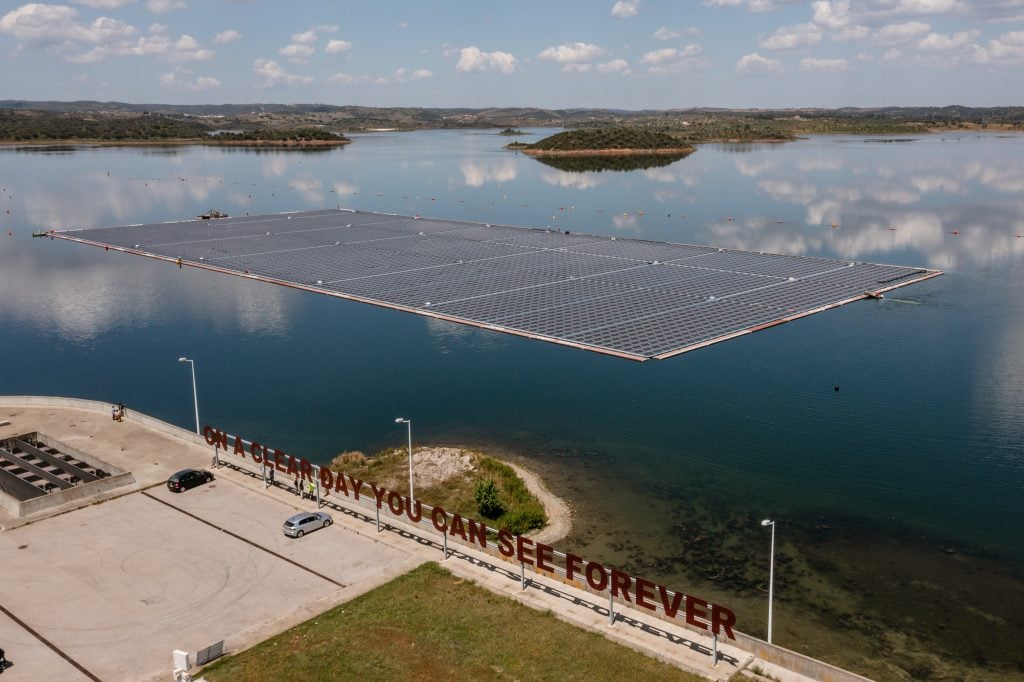
To be sure, these benefits do come at a cost. Floating solar systems are, on average, 30 percent more expensive than ground-mounted solar. Virtually all of that extra difference comes from the increased structure costs, which make up a share of total costs three times larger than in ground-mounted solar. “Ten years ago this was a super novel idea, and so everything was made on demand,” says Tchividjian. “The cost of materials has come down just because floating solar has become much more prevalent, but we’ve also worked really hard at making the whole process more efficient.”
The costs of floating solar arrays aren’t just monetary. Most are mounted on plastic-intensive rigs. But that may soon change. The Alqueva project is the world’s first to use a new type of panel mount made of recycled plastic and cork. These hybrid floaters are 15 percent lighter than their pure-plastic predecessors and less carbon intensive, reducing the total carbon footprint of floating arrays by 30 percent. “The ambition is that this type of platform can become neutral or even negative in CO2 footprint,” said EDP in a statement.
With major floating solar expansions at EDP and beyond, these more sustainable rigs will prove increasingly useful. The utility is set to expand the Alqueva park to 70 megawatts of capacity, and the company is gearing up to invest millions in Southeast Asia, where some 16 gigawatts of floatovoltaic power are expected to come online by 2030. Meanwhile, records continue to be broken nearly as soon as they’re set.
The tides of floating solar have risen faster and higher nowhere more so than in Asia, which accounts for some 70 percent of global capacity installed over the last five years. According to Wood Mackenzie, eight of the top ten countries set to lead the floating solar market over the next five years are in Asia.
Last November, when a 145,000-panel, 45-megawatt farm came online in Thailand, it was the world’s largest. Three months later, China’s Dezhou Dingzhuang unveiled a whopping 320 megawatts of capacity. That project’s record won’t last long, either: next year, a 600-megawatt farm is slated to come online in India.
How long that project will keep its title is uncertain. With solar, the sky — and water — is the limit.






